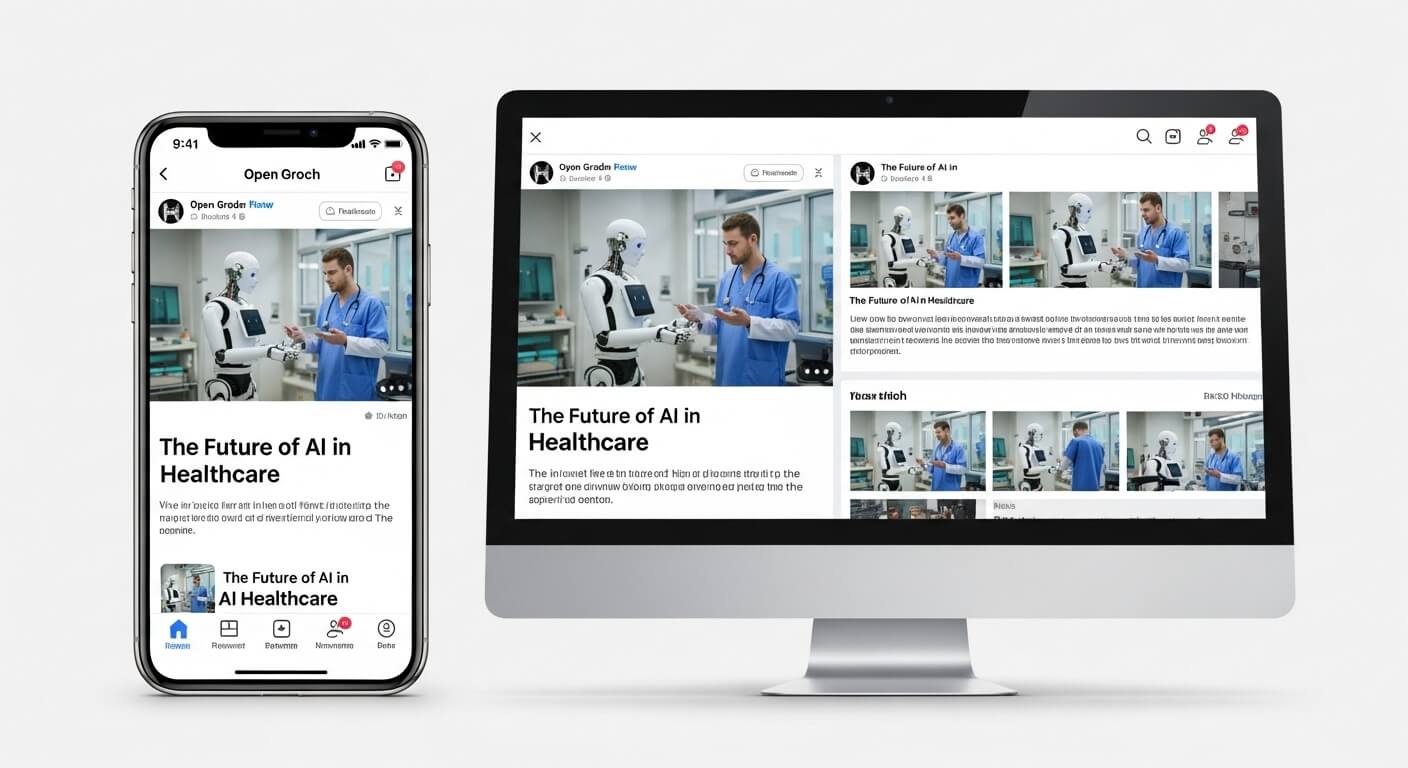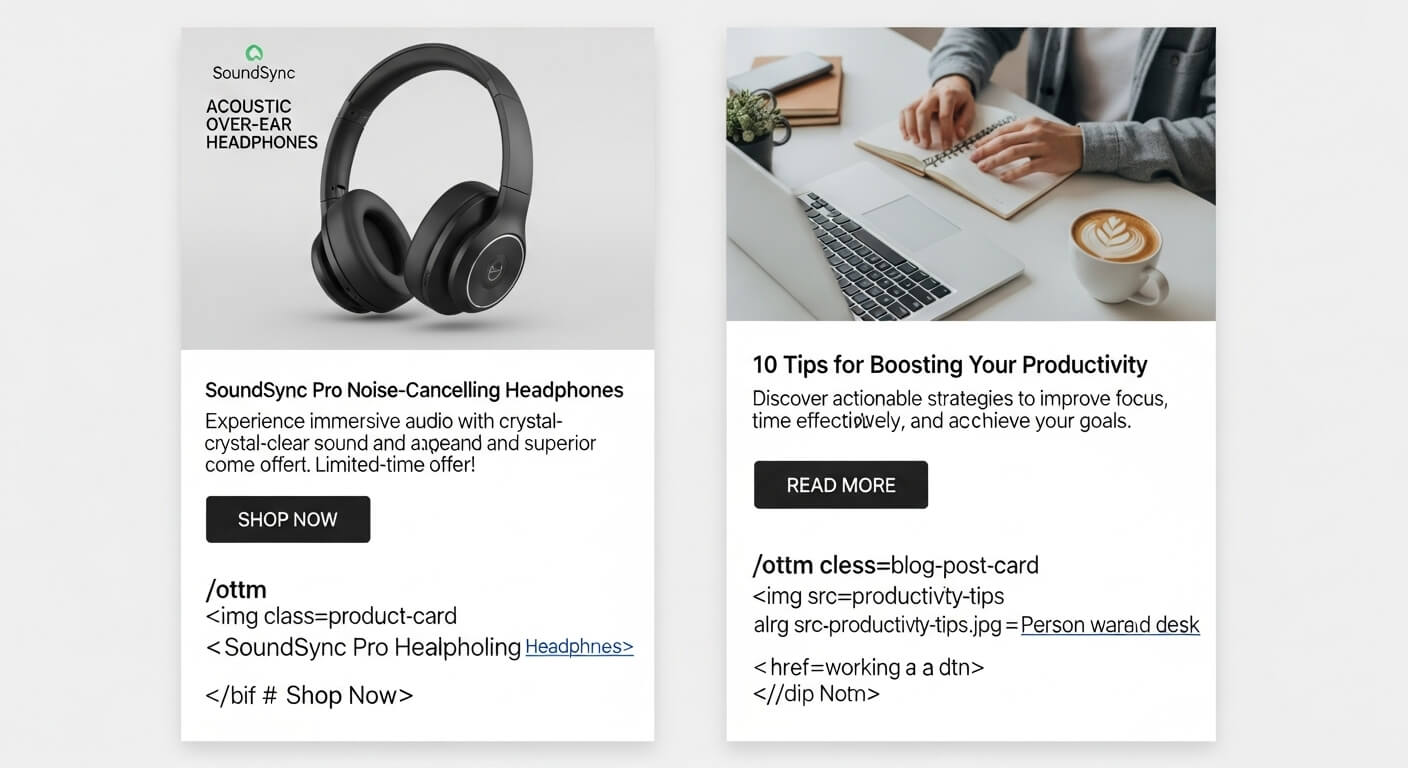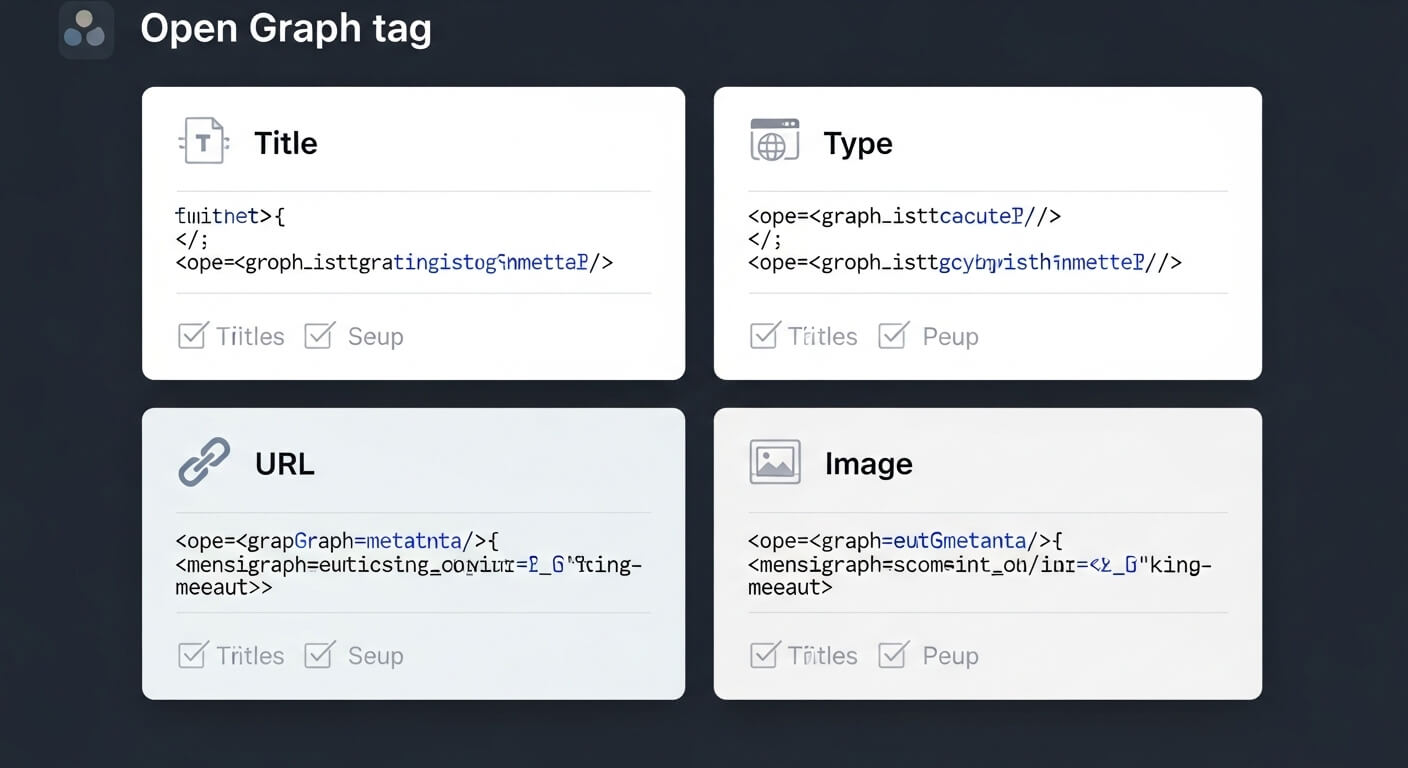
Open Graph Tags: The Ultimate Guide to Perfect Social Media Previews (2025)
Open Graph Tags: The Ultimate Guide to Perfect Social Media Previews (2025)
Ever shared a link on Facebook or Twitter only to see a generic preview instead of your beautiful content? You're not alone! Millions of websites miss out on engagement because they don't implement Open Graph tags properly.
In this comprehensive guide, we'll show you exactly how to create stunning social media previews that grab attention and drive clicks. Whether you're a developer, marketer, or business owner, you'll learn everything you need to know about Open Graph tags.
What Are Open Graph Tags? (And Why They Matter)
Open Graph tags are HTML meta tags that tell social media platforms exactly how to display your content when it's shared. Think of them as your content's "social media business card."

Here's the problem: Without proper Open Graph tags, platforms like Facebook, Twitter, and LinkedIn have to guess what your content is about. The result? Generic previews that don't capture attention or drive clicks.
The solution: Well-implemented Open Graph tags give you complete control over how your content appears, leading to:
- ✅ 40% higher click-through rates
- ✅ Better brand recognition
- ✅ Increased social media engagement
- ✅ Professional appearance across all platforms
The Essential Open Graph Tags You Need
1. The Big Four (Never Skip These!)
These are the foundation of every successful social media preview:
<!-- Your content's social media identity -->
<meta property="og:title" content="Your Compelling Page Title" />
<meta property="og:type" content="website" />
<meta property="og:url" content="https://yoursite.com/page" />
<meta property="og:image" content="https://yoursite.com/image.jpg" />
Pro Tip: Your og:title should be different from your page title. Make it more engaging and social-media friendly!
2. The Description That Drives Clicks
Your description is your elevator pitch. Make it count:
<meta property="og:description" content="Discover the secrets to creating viral social media content that converts. Learn from real examples and avoid the mistakes that kill engagement." />
Best Practices:
- Keep it under 160 characters
- Include a call-to-action
- Make it benefit-focused
- Use power words that create urgency
3. Brand Recognition with Site Name
Help users remember your brand:
<meta property="og:site_name" content="Your Brand Name" />
Advanced Open Graph Tags for Maximum Impact
Article-Specific Tags (Perfect for Blog Posts)
If you're sharing blog content, these tags are gold:
<!-- Article metadata for better SEO and social signals -->
<meta property="article:published_time" content="2025-01-10T00:00:00+00:00" />
<meta property="article:modified_time" content="2025-01-10T00:00:00+00:00" />
<meta property="article:author" content="https://yoursite.com/author" />
<meta property="article:section" content="Digital Marketing" />
<meta property="article:tag" content="Open Graph" />
<meta property="article:tag" content="Social Media Marketing" />
<meta property="article:tag" content="SEO" />
Video Content Tags (For YouTube, Vimeo, etc.)
Video content gets special treatment:
<!-- Video-specific Open Graph tags -->
<meta property="og:video" content="https://yoursite.com/video.mp4" />
<meta property="og:video:type" content="video/mp4" />
<meta property="og:video:width" content="1280" />
<meta property="og:video:height" content="720" />
<meta property="og:video:duration" content="180" />
Audio Content Tags (For Podcasts, Music)
Audio content needs its own tags:
<!-- Audio-specific Open Graph tags -->
<meta property="og:audio" content="https://yoursite.com/audio.mp3" />
<meta property="og:audio:type" content="audio/mpeg" />
<meta property="og:audio:title" content="Your Podcast Episode Title" />
<meta property="og:audio:artist" content="Your Name" />
Image Optimization: The Secret to Viral Shares

Image Requirements (The Numbers That Matter)
- Minimum size: 1200x630 pixels (Facebook's sweet spot)
- Maximum size: 8MB (keep it under 1MB for faster loading)
- Aspect ratio: 1.91:1 (the golden ratio for social media)
- Format: JPG for photos, PNG for graphics with text
Multiple Images Strategy
Want to show off your best content? Use multiple images:
<!-- Showcase your best content -->
<meta property="og:image" content="https://yoursite.com/hero-image.jpg" />
<meta property="og:image" content="https://yoursite.com/featured-image.jpg" />
<meta property="og:image" content="https://yoursite.com/behind-scenes.jpg" />
Image Metadata for Better Performance
Don't forget the details:
<!-- Image metadata for better platform understanding -->
<meta property="og:image:width" content="1200" />
<meta property="og:image:height" content="630" />
<meta property="og:image:alt" content="Team brainstorming digital marketing strategies" />
<meta property="og:image:type" content="image/jpeg" />
Platform-Specific Optimization

Facebook (The King of Social Sharing)
Facebook is the most comprehensive platform for Open Graph:
<!-- Facebook-specific optimizations -->
<meta property="og:locale" content="en_US" />
<meta property="og:locale:alternate" content="es_ES" />
<meta property="og:locale:alternate" content="fr_FR" />
<meta property="fb:app_id" content="your-facebook-app-id" />
Twitter (The Conversation Platform)
Twitter has its own meta tags but respects Open Graph:
<!-- Twitter-specific tags -->
<meta name="twitter:card" content="summary_large_image" />
<meta name="twitter:site" content="@yourusername" />
<meta name="twitter:creator" content="@authorusername" />
<meta name="twitter:title" content="Your Twitter-Optimized Title" />
<meta name="twitter:description" content="Your Twitter-Optimized Description" />
<meta name="twitter:image" content="https://yoursite.com/twitter-image.jpg" />
LinkedIn (The Professional Network)
LinkedIn focuses on professional content:
<!-- LinkedIn-specific optimizations -->
<meta property="og:image:secure_url" content="https://yoursite.com/image.jpg" />
<meta property="og:image:width" content="1200" />
<meta property="og:image:height" content="630" />
Implementation Best Practices (From Real Experience)
1. Always Use Absolute URLs
This is the #1 mistake we see:
<!-- ✅ Good - Always use absolute URLs -->
<meta property="og:image" content="https://yoursite.com/image.jpg" />
<meta property="og:url" content="https://yoursite.com/page" />
<!-- ❌ Bad - Relative URLs break social sharing -->
<meta property="og:image" content="/image.jpg" />
<meta property="og:url" content="/page" />
2. Test, Test, Test!
Use these essential tools to validate your tags:
- Facebook Sharing Debugger - The gold standard for testing
- Twitter Card Validator - Perfect for Twitter optimization
- LinkedIn Post Inspector - Essential for professional content
- OpenGraph.xyz - Quick preview across all platforms
3. Cache Management (The Hidden Challenge)
Social platforms cache your content aggressively. Here's how to refresh:
Facebook: Use the Sharing Debugger and click "Scrape Again" Twitter: Use the Card Validator and click "Preview card" LinkedIn: Use the Post Inspector and click "Request new scrape"
Common Mistakes That Kill Your Social Engagement
1. Missing Required Tags
Don't skip the basics:
<!-- ✅ Always include these four tags -->
<meta property="og:title" content="Your Title" />
<meta property="og:type" content="website" />
<meta property="og:url" content="https://yoursite.com/page" />
<meta property="og:image" content="https://yoursite.com/image.jpg" />
2. Poor Image Quality
Your image is your first impression:
- Resolution: Always use 1200x630 pixels minimum
- File size: Keep under 1MB for faster loading
- Content: Make sure it's relevant and engaging
- Branding: Include your logo when appropriate
3. Inconsistent Content
Your Open Graph content should match your page:
- Title: Should reflect your page content
- Description: Should accurately describe what users will find
- Image: Should be relevant to the content
- URL: Should be the exact page being shared
Dynamic Implementation Examples
Next.js Implementation
Here's how to implement dynamic Open Graph tags in Next.js:
import Head from 'next/head';
export default function BlogPost({ post }) {
return (
<>
<Head>
<meta property="og:title" content={post.title} />
<meta property="og:description" content={post.description} />
<meta property="og:image" content={post.image} />
<meta property="og:url" content={`https://yoursite.com/blog/${post.slug}`} />
<meta property="og:type" content="article" />
<meta property="article:published_time" content={post.publishedAt} />
<meta property="article:author" content={post.author} />
<meta property="article:section" content={post.category} />
{post.tags.map(tag => (
<meta key={tag} property="article:tag" content={tag} />
))}
</Head>
{/* Your content */}
</>
);
}
WordPress Implementation
For WordPress users, use a plugin like Yoast SEO or RankMath, or add this to your functions.php:
function add_open_graph_tags() {
if (is_single()) {
global $post;
$excerpt = wp_strip_all_tags($post->post_excerpt);
$excerpt = str_replace("\n", "", $excerpt);
echo '<meta property="og:title" content="' . get_the_title() . '" />';
echo '<meta property="og:description" content="' . $excerpt . '" />';
echo '<meta property="og:type" content="article" />';
echo '<meta property="og:url" content="' . get_permalink() . '" />';
echo '<meta property="og:image" content="' . get_the_post_thumbnail_url($post->ID, 'large') . '" />';
}
}
add_action('wp_head', 'add_open_graph_tags');
Monitoring and Analytics: Track Your Success
Track Social Shares
Monitor your performance with these tools:
- Google Analytics: Track social media traffic and conversions
- Facebook Insights: Monitor engagement and reach
- Twitter Analytics: Track tweet performance and engagement
- LinkedIn Analytics: Monitor professional content performance
A/B Testing Your Open Graph Tags
Test different configurations to find what works best:
- Titles: Test different headlines for the same content
- Images: Try different images to see which drives more clicks
- Descriptions: Test various descriptions to find the most engaging
- Timing: Test sharing at different times to optimize reach
Real-World Examples and Case Studies
Example 1: E-commerce Product Page
<!-- Perfect for product pages -->
<meta property="og:title" content="Wireless Bluetooth Headphones - Premium Sound Quality" />
<meta property="og:description" content="Experience crystal-clear audio with our premium wireless headphones. 30-hour battery life, noise cancellation, and comfortable design. Free shipping!" />
<meta property="og:image" content="https://yoursite.com/headphones-hero.jpg" />
<meta property="og:type" content="product" />
<meta property="product:price:amount" content="99.99" />
<meta property="product:price:currency" content="USD" />
Example 2: Blog Post
<!-- Perfect for blog content -->
<meta property="og:title" content="10 SEO Mistakes That Are Killing Your Traffic (2025)" />
<meta property="og:description" content="Discover the common SEO mistakes that could be costing you thousands of visitors. Learn how to fix them and boost your rankings today!" />
<meta property="og:image" content="https://yoursite.com/seo-mistakes-infographic.jpg" />
<meta property="og:type" content="article" />
<meta property="article:published_time" content="2025-01-10T09:00:00+00:00" />
<meta property="article:author" content="https://yoursite.com/author/john-doe" />
Tools and Resources to Help You Succeed
Essential Testing Tools
- Facebook Sharing Debugger - Test how your content appears on Facebook
- Twitter Card Validator - Validate your Twitter cards
- LinkedIn Post Inspector - Check LinkedIn previews
- OpenGraph.xyz - Quick preview across all platforms
Helpful Browser Extensions
- Open Graph Preview - Chrome extension for quick testing
- Social Media Preview - Firefox extension for previewing shares
- Meta Tags Checker - Check all your meta tags at once
Recommended Reading
- Twitter Cards Optimization Guide - Master Twitter-specific optimization
- Social Media Preview Best Practices - Learn from real examples
- AI Content Optimization - Use AI to create better descriptions
Conclusion: Your Path to Social Media Success
Open Graph tags are your secret weapon for dominating social media. By implementing the strategies in this guide, you'll:
- ✅ Create stunning social media previews that grab attention
- ✅ Increase click-through rates by up to 40%
- ✅ Build brand recognition across all platforms
- ✅ Drive more traffic and conversions
Remember, social media is constantly evolving. Stay updated with platform changes and test regularly to maintain your competitive edge.
Ready to take your social media game to the next level? Start implementing these Open Graph tags today and watch your engagement soar!
🤔 Frequently Asked Questions
Q: How do I know if my Open Graph tags are working?
A: Use Facebook's Sharing Debugger, Twitter's Card Validator, and LinkedIn's Post Inspector to test your tags. These tools show exactly how your content will appear when shared.
Q: What's the difference between Open Graph and Twitter Cards?
A: Open Graph tags work across multiple platforms, while Twitter Cards are Twitter-specific. For best results, implement both. Twitter will use Twitter Cards if available, otherwise fall back to Open Graph tags.
Q: How often should I update my Open Graph tags?
A: Update them whenever you change your content, images, or titles. For dynamic content, consider implementing automatic generation based on your content management system.
Q: What image size works best for social media previews?
A: 1200x630 pixels is the optimal size for most platforms. This ratio (1.91:1) works well on Facebook, Twitter, and LinkedIn while maintaining quality on mobile devices.
Q: Can I use different images for different platforms?
A: While you can't specify different images per platform with standard Open Graph tags, you can use platform-specific meta tags for Twitter Cards to optimize for each platform's requirements.
Q: Why aren't my Open Graph tags showing up when I share my content?
A: Common issues include: missing tags, incorrect URLs, images that are too small, or caching issues. Use the debugging tools mentioned above to identify and fix the problem.
Q: Do Open Graph tags affect SEO?
A: While Open Graph tags don't directly impact search rankings, they improve social media engagement, which can indirectly boost SEO through increased traffic and social signals.
Q: How do I implement Open Graph tags on WordPress?
A: Use plugins like Yoast SEO, RankMath, or Open Graph plugins. For custom implementation, add the meta tags to your theme's header.php file or use WordPress hooks.
Need help implementing Open Graph tags on your website? Check out our social preview tools to test and optimize your content across all platforms.
Related Articles:
Written by LinkGlimpse Team
Published on January 10, 2025